One Week with Apple Card: What I Love and What I Hate
It's not your average credit card.

Apple's newest product has generated breathless hype. It all started with an onstage unveiling by CEO Tim Cook last March, and it continued with an invitation-only enrollment process. Now, almost anyone can get their hands on the product. But this isn't a device like a new iPhone, Apple Watch or some other Apple gadget — it's a credit card.
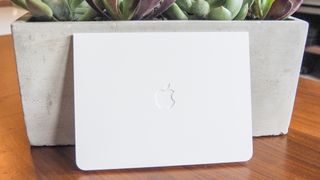
Like other Apple products, Apple Card comes in sleek white packaging. Setting it up with an iPhone is almost magically simple. But it's also a completely different product than Apple has ever created. I'm used to giving the company my money, but I'm not used to owing it money. This is a dynamic I'm still getting used to.

I've been using Apple Card for about a week, most of that time without a physical credit card in hand. There's a lot to like about Apple Card. If you're in the market for a cash-back credit card and can take on the responsibility of a new credit line, it's a useful tool. I admit that Apple Card doesn't really fit in with my current credit card strategy, which is to put all of my spending on a travel rewards card (currently the American Express Platinum card) to earn boatloads of points that I can use on flights and hotel rooms. I pay my cards off in full each month to avoid paying interest.
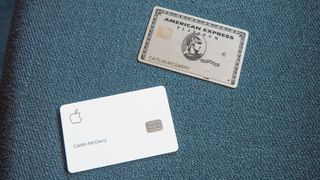
Apple Card doesn't offer travel rewards. But it doesn't require a hefty annual fee, either (the Amex Platinum charges $550 a year). Nor does Apple charge fees for late payments. And on top of that, the Wallet app helps you clearly see what you're spending, where you're spending it and how you can better manage your finances. That I've earned $3.90 in cash back after a week of use is icing on the cake. (I'm being only a little sarcastic.)
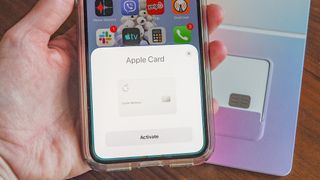
Read on to see what I love and hate about Apple Card just one week in.
The good
It's easy: Everything about Apple Card, from the application process to using the card with Apple Pay in stores, is just plain easy. For contrast, when I applied for my AmEx, a glitch made the system process my application five times. I received one approval letter and four rejection letters in the mail. Untangling that mess took a while. From applying for the Apple Card to then getting access to a card to use in digital form took less than 5 minutes. After I set it as my default card for Apple Pay, I placed an order for a poke bowl through a food delivery service. My order arrived at my doorstep less than an hour after I applied for the card.
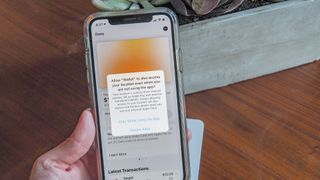
The Wallet app: Other credit card companies should take note. Apple has designed its presentation of your Apple Card information in the Wallet app to be as clear as possible. I can see all of my transactions, including the exact location where I spent that money on a map (in case I forget where I go, I suppose).
Cash back: I don't get any cash back with my AmEx, though there are plenty of other no-fee credit cards that offer similar perks to Apple Card's (Chase Freedom is a popular option). Unlike with other cards, you don't have to wait for your Apple Card statement to post to get access to your money; as soon as the transaction clears, the money appears on your Apple Cash card and can be used in stores or online. You don't recoup very much: just 2% on purchases with Apple Pay and 1% when using the actual card. Purchases at Apple will net you 3% cash back, which will be useful come iPhone season. Apple is also giving 3% cash back on Uber rides and Uber Eats purchases, but a higher percentage (and a wider variety of partners) would make the card more competitive.
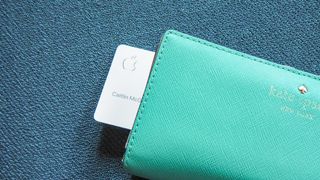
Security: Every one of my credit cards has been compromised in the past, including my AmEx (which I've been using for only about six months). Apple said it wants to make Apple Card the most secure card on the market, starting with the lack of numbers on the physical card. If someone steals your card, all they'll have is your name once you quickly cancel the card and ask for a new one in the Wallet app.
MORE: Identity Theft Victim? Here's 6 Things You Need to Do
Apple creates a unique device number for each Apple Card, which is then stored in your iPhone's Secure Element. Merchants never see the card number or any other identifying details about you. And, of course, when using your phone to pay with the Apple Card, you have to authenticate the transaction with Face ID or Touch ID, adding another layer of security.
Avoiding fraudulent transactions may make Apple Card worth it for me, despite the lack of travel perks.
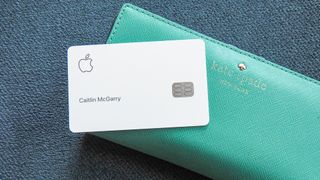
Design: The Apple Card is a very nice-looking card, if you're into credit card design. (Insert shrug emoji here.) My name is etched into the white-and-titanium card, along with the Apple logo, making this card an elegant addition to my wallet.
The bad
No authorized users: Whenever I apply for a new credit card, I add my husband as an authorized user. (He does the same for me.) We share credit lines to centralize our spending and make it easier and faster to rack up points for our shared travel expenses. Apple Card doesn't currently support authorized users, so my husband is still using our AmEx (and now I have two cards to remember to pay). I have to believe that Apple will come up with a useful, creative way to enable Family Sharing for Apple Card, but until that happens, it's not an ideal card.
No travel rewards: The primary reason I use a credit card for all my spending instead of a debit card is the chance to get free stuff. Credit card companies offer tons of perks, particularly for travel, and I've gotten free flights, hotel room upgrades, airport lounge access and more from using credit cards. (And I have never paid a dime in interest, so it's like the companies are paying me to use their cards!) I'm not the average credit card user, I realize, but the lack of perks makes Apple Card less appealing to me.
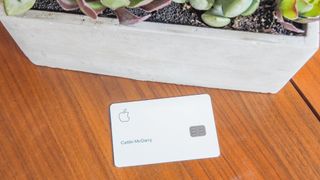
The design: There are a few downsides to the card's streamlined look: The white makes it look more like an Apple employee badge than a high-end credit card, which defeats the purpose of the titanium. (I prefer the blue metal of the Chase Sapphire Preferred and the gleaming silver of the AmEx Platinum.) Then, there are the incredibly specific cleaning instructions that Apple provided to help you keep the card pristine. Apparently, you can't store the card near leather or denim. Those materials are basically the only ones that ever touch my credit cards, so I'm expecting my Apple Card to look like garbage in short order.
More to come
I plan to use the Apple Card as my daily card, including on an upcoming trip to Europe. Stay tuned to see if the Apple Cards's ease of use and extra layers of security make up for its lack of travel rewards.
Sign up to get the BEST of Tom’s Guide direct to your inbox.
Upgrade your life with a daily dose of the biggest tech news, lifestyle hacks and our curated analysis. Be the first to know about cutting-edge gadgets and the hottest deals.
Caitlin is a Senior editor for Gizmodo. She has also worked on Tom's Guide, Macworld, PCWorld and the Las Vegas Review-Journal. When she's not testing out the latest devices, you can find her running around the streets of Los Angeles, putting in morning miles or searching for the best tacos.
